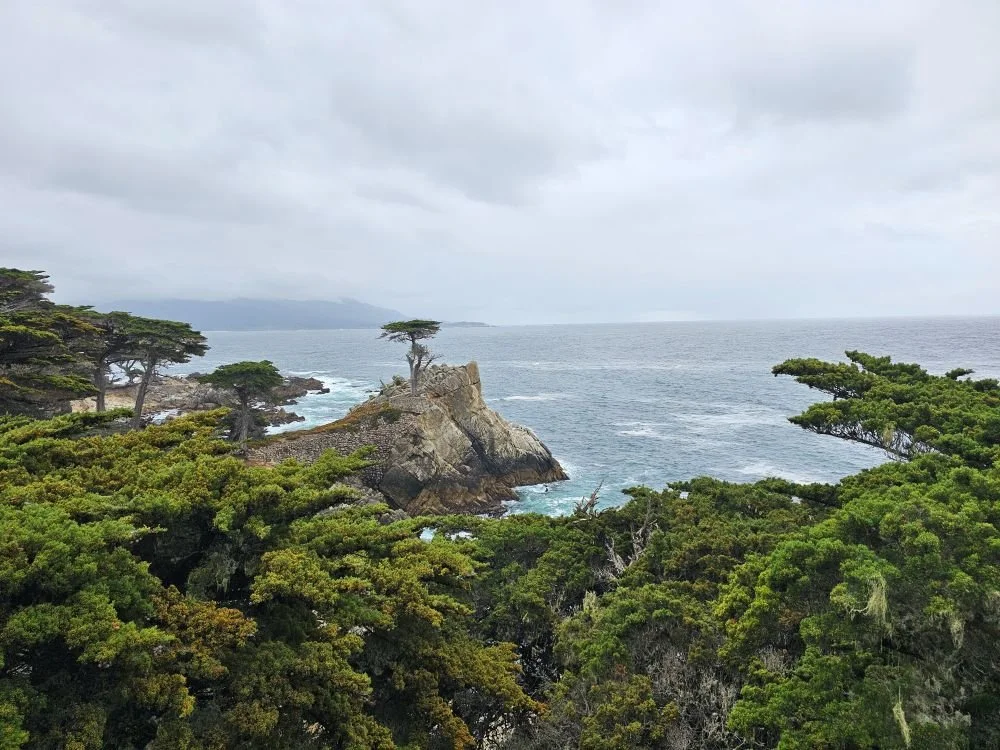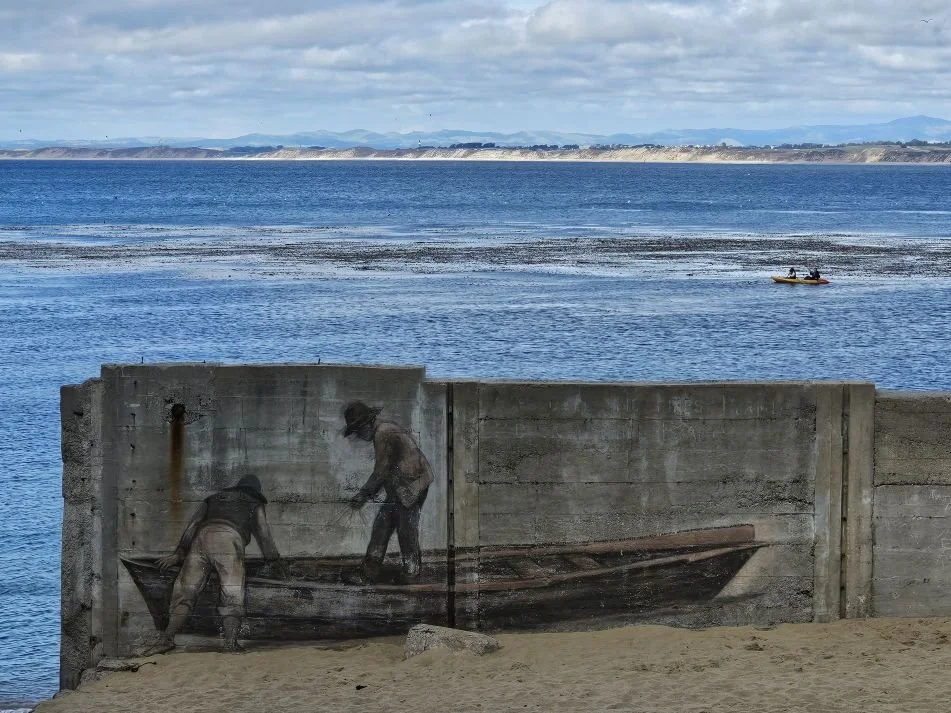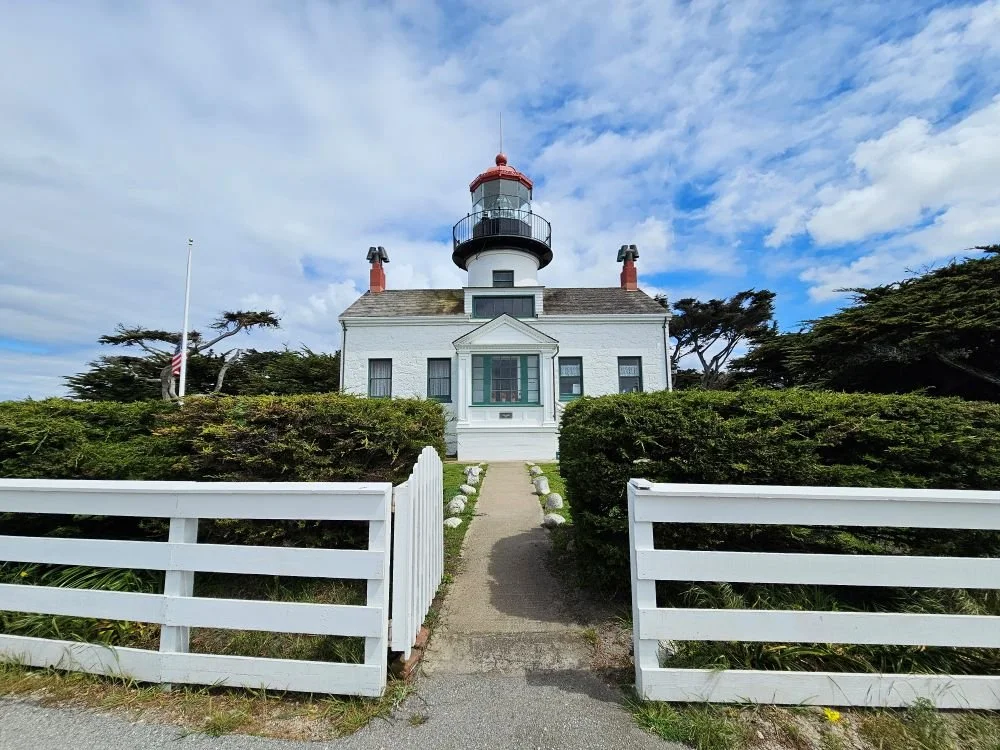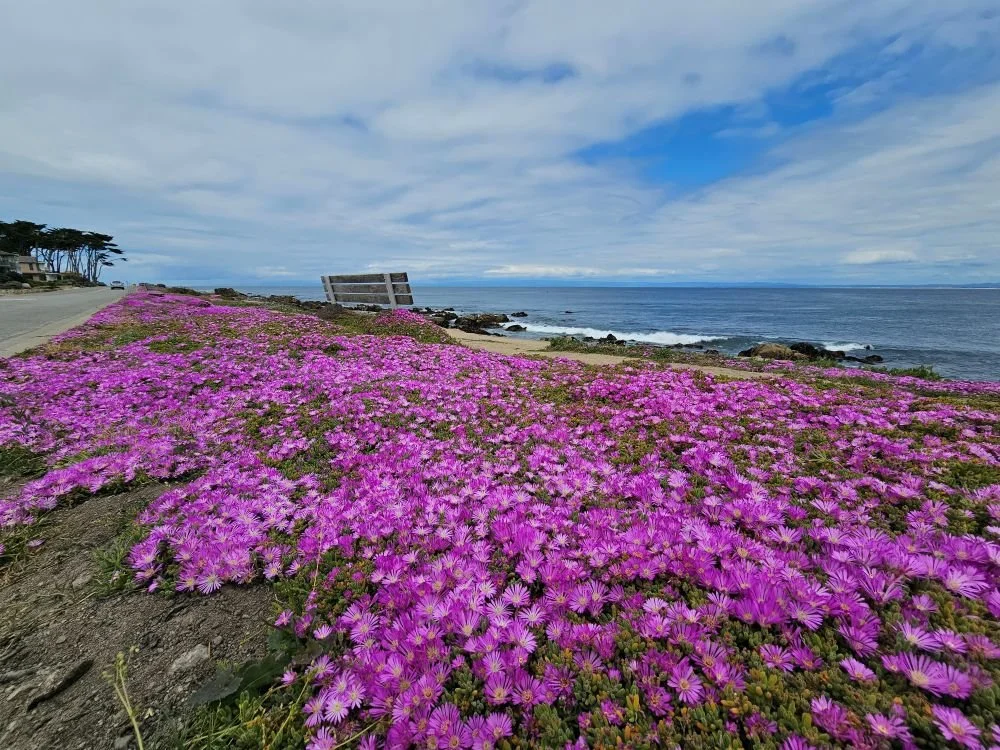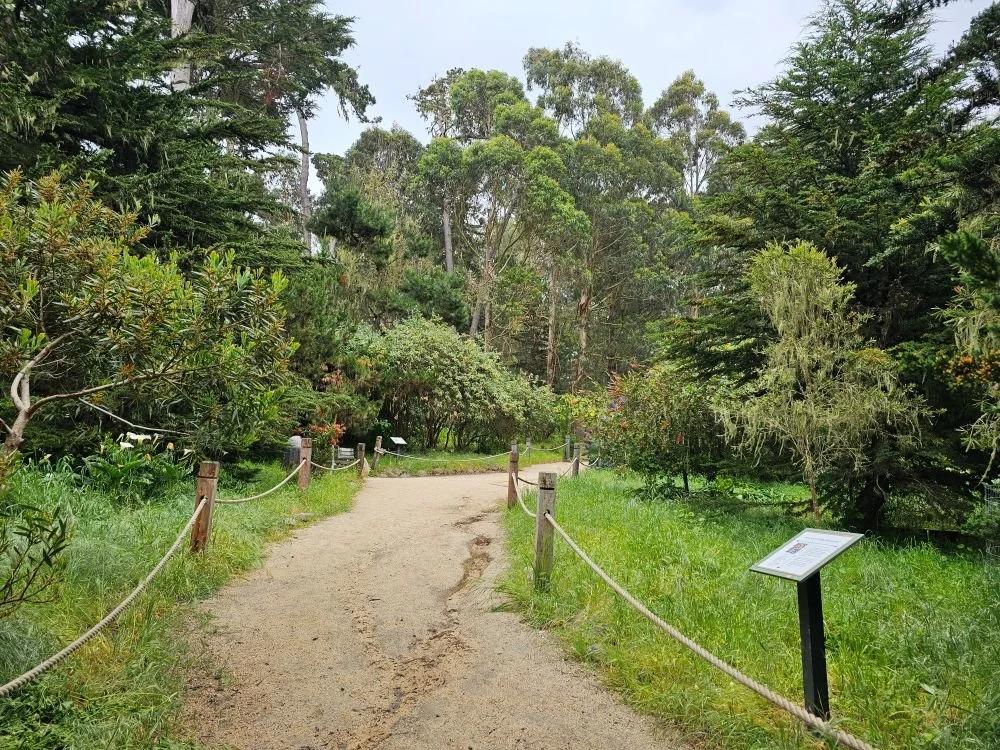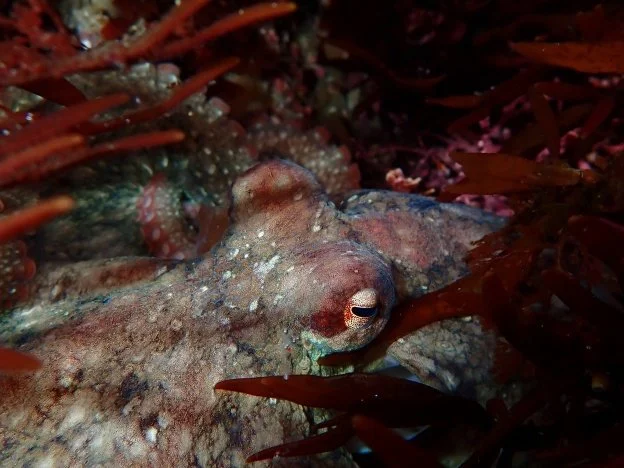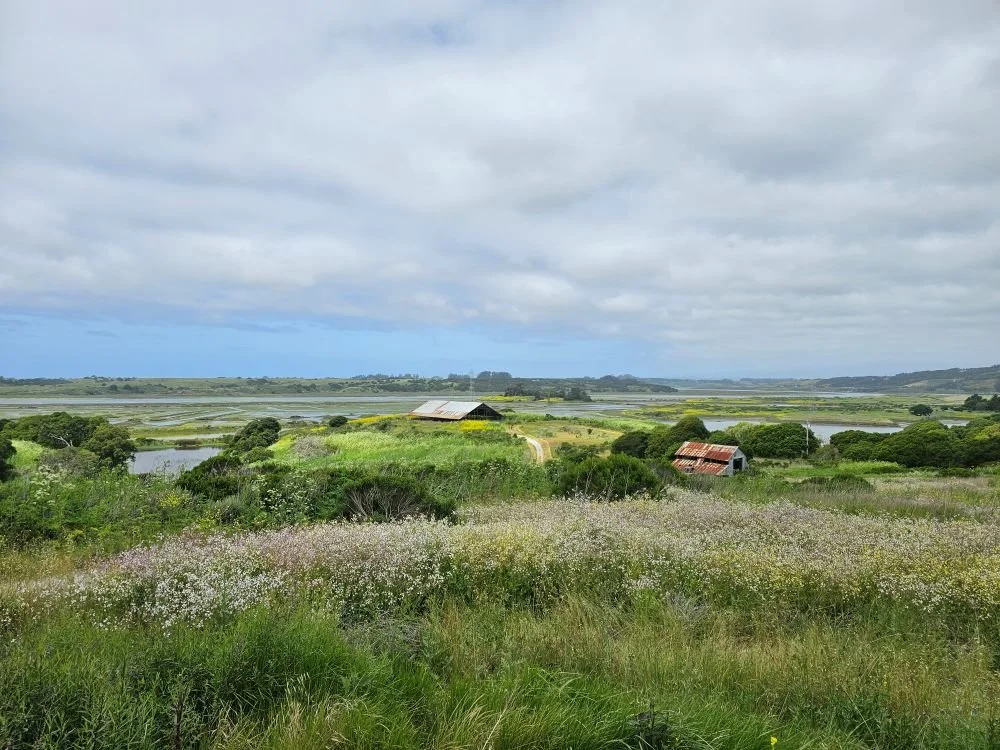20 Things to do in Monterey, California
Whether you’re visiting for a weekend or a week, the coastal city of Monterey has more than enough restaurants and bars, activities and attractions, to keep you entertained. Exploring the peninsula’s sandy coves, rocky headlands and iconic pines is made easy by the Monterey Bay Recreation Trail and 17-mile Drive and can be as active or relaxed as you like. You can take to the water in search of whales, dive into the bay’s magnificent kelp forests, or burrow back in time to uncover the region’s remarkable history. Whatever your interests, one visit often isn’t enough – Monterey has a habit of tempting you back.
1. Whale watching is a year-round draw in Monterey Bay
A submarine canyon that plunges to depths of 2.5 miles (4 km) makes Monterey Bay a hotspot for whales and dolphins. Some, like humpback and fin whales, come to feed on shoals of anchovies, sardines and krill, while others, like gray whales, pass through on their migrations.
As well as seasonal visitors, species such as killer whales, Risso’s dolphins and Pacific white-sided dolphins can be seen year-round, making Monterey a world-class whale and dolphin watching destination.
2. Visit Monterey Bay Aquarium
Monterey Bay Aquarium’s kelp forest exhibit is worth the admission fee alone. Prepare to be amazed as giant sea bass, leopard sharks and silvery schools of northern anchovy weave through swaying kelp that towers 28 feet above you.
Don’t miss feeding time at the Open Sea exhibit, when hammerhead sharks, turtles and rays twist and turn through a million gallons of sea water, or at the Sea Otter exhibit where Selka and Ivy, the Aquarium’s resident otters, delight visitors.
If you need a breath of fresh air at any time, step outside to the Aquarium’s viewing deck to search for rafts of wild otters amongst the neighbouring kelp forest.
3. Soak up the sights and sounds of Cannery Row
Once a hive of sardine-packing activity, Cannery Row now boasts an eclectic mix of waterfront restaurants, bars, shops and hotels. This is the perfect spot to indulge in some local wine tasting, enjoy seafood fresh from the Bay, and buy yourself a stuffed sea otter toy.
Alternatively, be transported back in time by the numerous information boards detailing the city’s industrious past and its setting for John Steinbeck’s novels Cannery Row and Sweet Thursday. Stop at Steinbeck Plaza to see a bronze bust of the popular author and Cannery Row monument, portraying a selection of local characters.
4. Explore the beaches and forests of 17-Mile Drive
Seventeen-Mile Drive is a picturesque route that winds around the coast from Pacific Grove, through Pebble Beach, to Carmel taking in sweeping beaches of pale sand, rugged granite headlands and old groves of cypress pines. Toll booths collect a fee for cars (bikes are free) and issue a map detailing stopping points along the route.
Colliding waves at The Restless Sea viewpoint create all the shades of the ocean. Watch the waves, too, for sea otters and harbour seals. An onshore breeze at Bird Rock will deliver the sounds and smells of seabirds and sea lions that rest there. Then keep ancient company at Crocker Grove, beneath the world’s oldest and largest Monterey Cypress pines.
5. Rent a kayak and paddle along the waterfront
Whether you join a tour or go it alone, taking to the water in a kayak is a brilliant way to see Monterey’s waterfront, from the regular rows of hotel balconies to the rust-streaked pilings of cannery ruins. With a helpful shove from shore, you can paddle out beyond the surf then drift quietly between patches of kelp. You’ll soon be familiar with the snorts of surfacing sea lions, the tap-tap of sea otters hammering open clams and mussels, and the whirr of feathers as pigeon guillemots and Brandt’s cormorants fly by.
6. Old Fisherman’s Wharf
Twenty-five minutes’ walk from Monterey Bay Aquarium along the level Monterey Bay Coastal Recreation Trail brings you to one of Monterey’s most famous attractions, Old Fisherman’s Wharf. Here, a carnival atmosphere pervades as restaurants vie for business to a soundtrack of barking sea lions and screeching gulls. Sweet wafts of freshly made toffee and candy floss mingle with the smell of busy fish and chip fryers and sun-dried seaweed.
The pier is as much a working wharf as a tourist hotspot. Whale watching passengers gather beside stacks of crab pots and fisherman prep the day’s catch in a flurry of scales, the ever-present gulls standing by.
Mounted binoculars at the lookout point on the end of the pier offer closer views of sea otters, harbour seals and sea lions in the harbour.
7. Take a tour of Point Pinos Lighthouse
Point Pinos lighthouse, working since 1855, is the oldest continuously operating lighthouse on the west coast. Previously powered by whale oil, lard, then kerosene, its electric light is now fully automated.
For a small admission fee, you can tour the inside of the building where rooms have been restored to the time of Emily Fish, one of the lighthouse’s longest serving keepers who served from 1893 to 1914. Information boards and docents describe the many shipwrecks of this rocky and fog-prone stretch of coast. Allow time to enjoy the gardens and ocean views too.
8. Delve into Monterey’s history at Pacific House Museum
Pacific House Museum, within Monterey State Historic Park, brings to life the history of Monterey, starting from its early Native American residents, the Rumsien. Fascinating artefacts include baskets made from willow shoots and decorated with beads and wool, and tools made from deer bone, whale ribs and obsidian. The museum’s timeline moves through to the periods of Spanish control, then Mexican, before California became part of the United States in 1850.
Other historical sites nearby include Custom House (with its cactus garden), the first house in California made of fired bricks, and the Whaling Station – headquarters of the Old Monterey Whaling Company – with its whale bone sidewalk.
9. See spring flowers in bloom along the Monterey peninsula
Between March and June, Monterey peninsula dons its finest attire as flowers bloom. Fed by spring showers, blankets of purple ice plant cloak the coast of Pacific Grove, and the nodding heads of vibrant orange California poppies brighten many a view. Spikes of pale purple lupine reach for the sky, while the equally cheery seaside daisies hug the ground. Combined with blue skies – before the arrival of foggier summer days – these coastal colours are a photographer’s dream.
Memory garden, a historic walled garden near Custom House, is beautifully curated with year-round blooms and is open to the public between events.
10. Eat local at Monterey’s farmers’ markets
Head to Alvarado Street and West Franklin Street between 4 and 8pm on Tuesdays for a chance to stock up on seasonal local produce. Strawberries, raspberries, blueberries, lettuce and artichoke are all grown in huge quantities in the ‘salad bowl of the world’. Food trucks offer instant sustenance, while live musicians provide the backing track to your browsing.
Pacific Grove also has a farmers’ market at the corner of Central and Grand Avenues between 3 and 7pm on Mondays, with many of the same vendors.
11. Search for migratory monarch butterflies in Pacific Grove
From November to February, migratory monarch butterflies cluster together in tall trees in Pacific Grove. Driven south by decreasing temperatures, clustering helps protect the butterflies from wind and rain as they rest over winter. With the arrival of spring, the butterflies head north again, following the growth of milkweed, the only plant their caterpillars eat.
Early on winter mornings is the best time to see monarchs clustering in Pacific Grove Monarch Sanctuary. The sanctuary is worth a visit at any time of year, however, to learn more about the incredible life cycle of monarch butterflies and their multi-generational migration.
12. Wine tasting along the Monterey Wine Trail
Many of California’s world-famous wines come from Monterey County. Take to the Monterey Wine Trail for vineyard views and wine tasting in these sun-soaked surroundings. Choose from wineries in the Salinas Valley, Carmel Valley and the Santa Lucia Highlands, or visit tasting rooms in Monterey and Carmel-by-Sea – with more than 65 to choose from, you’ll be spoilt for choice.
Wine aficionados can thank the submarine canyon beneath Monterey Bay for the region’s impressive wine production. It’s these deep, cool waters that moderate summer temperatures and produce the fog that results in a long mild growing season and award-winning wines.
13. Dive into the cool waters of Monterey Bay
The cold, clear waters of Monterey Bay offer world-renowned SCUBA dive sites. Whilst you will need to layer up against the chill (the water temperature rarely exceeds 15°C), it’s worth it for the abundance and diversity of marine life inhabiting these coastal waters. From spotting sublime sea slugs, to octopus, fish, sea lions, and the towering kelp forests themselves, every dive is an adventure.
Monterey Beach offers a popular shore dive, while a host of other locations offer options requiring varying levels of experience. Local dive shops offer equipment, tours and more, including night dives for the brave.
14. Tee off for a top-notch golfing break in Monterey
If you can resist the distraction of a squadron of pelicans flying overhead and the occasional deer sauntering across the green, Monterey is a superb location for a round of golf. Repeatedly ranked amongst the top golf destinations in the world, Monterey has a lot to offer. The iconic Pebble Beach Golf Links offers breath-taking ocean views, while Del Monte Golf Course, which opened in 1897, is the oldest golf course in continuous operation west of the Mississippi. Pacific Grove Golf Links lies between historic Point Pinos lighthouse and the ocean, while the challenging 18-hole course at Monterey Pines Golf Course is a favourite.
15. Pass some time at Pacific Grove Museum of Natural History
Be lured in by the life-size sculpture of a gray whale outside the museum and stay for the wealth of historical and ecological information offered inside. A 3D topographical map of Monterey County highlights the region’s landscape extremes, from the broad Salinas Valley to the rugged Santa Lucia Range, and beautifully crafted displays illustrate the region’s ecosystems and wildlife, and the challenges they’re facing. Native species are in the spotlight in both The Bird Gallery and the Native Plant Garden, which features California’s drought-resistant species. This treasure trove of information will answer all your questions about Monterey, and more.
16. Visit Fort Oord Dunes State Park
Just north of Monterey, Fort Ord Dunes State Park covers four miles of beach and nearly 1,000 acres of delicate coastal dunes. Boardwalks and trails allow you to explore these sensitive habitats and the many species inhabiting them. Keep an eye out for Smith’s blue butterflies, California legless lizards and the ground-nesting western snowy plover.
Back on the beach, you may well spot the distant blows and breaches of whales in Monterey Bay National Marine Sanctuary and see sea lions or harbour seals hauled out on the shore.
17. Explore Elkhorn Slough Reserve, one of California’s biggest salt marshes
Elkhorn Slough is a seven-mile shallow muddy estuary that supports populations of sea otters, harbour seals and seabirds that feed in the tidal waters, marshes and mudflats. Seagrass meadows grow in the shallows, sheltering invertebrates and juvenile fish. The Slough lies within Elkhorn Slough Reserve, which has a visitor centre and five miles of trails offering views of oak woodland, grassland, salt marsh and tidal flats.
Another way to explore the Slough is from the water. Kayak rental and boat trips depart from nearby Moss Landing. Low tide, when the lower water level concentrates wildlife in the central channel, is the best time for a boat trip.
18. Go sea otter spotting
Monterey is otterly obsessed. From t-shirts to cuddly toys, and postcards to fridge magnets, sea otters are everywhere. The city offers ample opportunity to observe otters, whether in the Aquarium, during a boat trip or whilst out sea kayaking. When observing sea otters in the wild, it’s important you don’t disturb them. So being able to watch the sea otters go about their business at close range without bothering them, is brilliant. And you can do that from Monterey’s Coastguard Pier. Sea otters often forage close to the pier and from there you can watch them surface time and again to devour mussels, urchins and crabs.
19. Tour the murals of Monterey
The walls of Monterey are adorned with murals, many of which are located along Monterey Bay Coastal Recreation Trail and can easily be reached on foot or by bike. At McAbee Beach, a large painting depicts two fishermen preparing to go to sea and is thought to reflect a Chinese fishing village that occupied the beach until the late 1920s. Further east along the Recreation Trail, ‘Mack and the boys’ was painted in homage to characters from John Steinbeck's famous novel Cannery Row. Further east again, in Pacific Grove, Lovers Point mural celebrates the area’s natural and cultural history.
20. Take to the tide pools of Monterey Peninsula
Whether you’re a regular explorer of tide pools, or a visit to Monterey Bay Aquarium has sparked a newfound appreciation for intertidal life, Monterey Peninsula is a prime spot for tide pooling. Low tide reveals a plethora of life forms, from huge anemones to spiny urchins, and brilliant yellow sea slugs to armour-plated chitons. There’s even a chance of spotting an octopus before the tide returns.
To tide pool safely, always check the tide times (low tide is best) and weather, wear warm clothes and sturdy shoes, and watch for waves. Watch your step, too, to avoid standing on the creatures you’ve come to see, and look but don’t touch.



